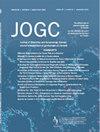Effectiveness of Pelvic Floor Muscle Strength Training to Prevent and Treat Urinary Incontinence in Postpartum Primiparous Women: A Systematic Review
IF 2.2
Q2 OBSTETRICS & GYNECOLOGY
引用次数: 0
Abstract
Objectives
To analyze the effectiveness of active physiotherapy of the pelvic floor as a method of prevention and treatment in primiparous postpartum women.
Methods
PubMed (MEDLINE), SCOPUS, Web of Science, CINAHL Complete, and PEDro databases were searched to identify clinical trials that included primiparous postpartum women that compared the effects of active physiotherapy of the pelvic floor during postpartum, and the degree of urinary incontinence was measured. Data extraction was conducted by 2 authors using a Microsoft Excel sheet, with a third author involved in case of discrepancy or doubt.
Results
A total of 5 studies were selected, including 444 primiparous postpartum women, 222 of whom received active physiotherapy of the pelvic floor. The results were very heterogeneous; 2 of the studies did not find significant differences between the groups, one study showed a clear improvement in the intervention group, and in the other studies, a significant intragroup improvement was found post-intervention. There was no significant difference in muscle resistance and strength (P < 0.05), but if applied combined with biofeedback, there was a clear improvement (P = 0.001). Regarding urinary symptoms, there was an improvement in the intervention group (P < 0.05).
Conclusions
This systematic review indicates that pelvic floor muscle training is an effective intervention to prevent and treat urinary incontinence in postpartum women. Pelvic floor muscle training is effective in improving pelvic floor strength and reducing urinary incontinence symptoms.
盆底肌力训练预防和治疗产后初产妇尿失禁的有效性:一项系统综述。
目的:分析盆底主动物理治疗作为预防和治疗初产产后妇女盆底疼痛的方法的有效性。方法:检索Pubmed (MEDLINE)、SCOPUS、Web of Science (WOS)、CINAHL Complete和PEDro数据库,以确定包括产后初产妇女的临床试验,比较产后盆底物理治疗的效果,并测量尿失禁的程度。数据提取由两位作者在Microsoft Excel表格中进行,如果存在差异或疑问,则使用第三位作者。结果:共纳入5项研究,444例初产产后妇女,其中222例接受盆底积极物理治疗。结果非常不同,两项研究没有发现两组之间的显著差异,一项研究显示干预组有明显的改善,另一项研究发现干预后组内有显著的改善。肌肉阻力和力量无显著差异(P < 0.05),但与生物反馈联合应用有明显改善(P = 0.001)。干预组尿路症状有明显改善(P < 0.05)。结论:本系统综述提示盆底肌训练(PFMT)是预防和治疗产后妇女尿失禁的有效干预措施。PFMT改善盆底力量和减少尿失禁症状。
本文章由计算机程序翻译,如有差异,请以英文原文为准。
求助全文
约1分钟内获得全文
求助全文
来源期刊

Journal of obstetrics and gynaecology Canada
OBSTETRICS & GYNECOLOGY-
CiteScore
3.30
自引率
5.60%
发文量
302
审稿时长
32 days
期刊介绍:
Journal of Obstetrics and Gynaecology Canada (JOGC) is Canada"s peer-reviewed journal of obstetrics, gynaecology, and women"s health. Each monthly issue contains original research articles, reviews, case reports, commentaries, and editorials on all aspects of reproductive health. JOGC is the original publication source of evidence-based clinical guidelines, committee opinions, and policy statements that derive from standing or ad hoc committees of the Society of Obstetricians and Gynaecologists of Canada. JOGC is included in the National Library of Medicine"s MEDLINE database, and abstracts from JOGC are accessible on PubMed.
 求助内容:
求助内容: 应助结果提醒方式:
应助结果提醒方式:


